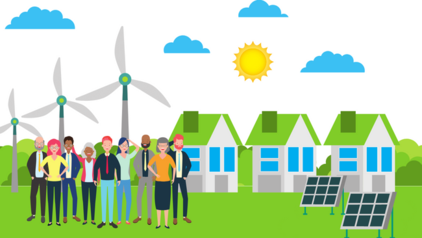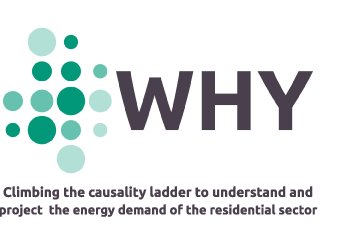The main characteristics of the energy community using the WHY tools

The energy community use cases consist of two completely different examples. On the one hand, we have a more traditional top-down Energy Community where a public authority gives away some space in public buildings to install PV panels. The production is then shared among the members of the energy community. In this particular case, the public authority is the town hold of Hernani in the north of Spain that has given away the roof of the public sport arena. Around 100 persons have signed up to participate in the energy community and the first installation of PV panels is being carried out.
On the other hand, the second example is a bottom-up approach. In this case, the owners of the buildings of a neighbourhood have shown interest in going beyond their regular management obligations and start considering a more integral approach to the energy consumption in their buildings. For this end, they have created a refurbishment plan which includes becoming an Energy Community at some point.
The innovative role and research question that the WHY project contributes to;
The main objective of this use cases is to develop tools that help the promoters of both energy communities to solve some of the main problems when setting one:
- Technical questions: What technical solutions make sense in my energy community? What should be the order to implement these?
- Economic questions: What will be the best way to finance the infrastructure? And to split the investment costs / energy savings / energy production?
- Governance questions: Which governance structures are more suitables for the community?
How can other energy communities benefit of a similar case / how can the work provided by WHY be adapted to other energy communities?
The WHY project aims to create guidelines that help other energy communities reuse the outcomes of the projects. The WHY project will provide quite different outcomes of potential interest for energy communities:
- Standardised load profiles: this result consists of a set of realistic load profiles that could be used when carrying out techno-economic simulations of the different interventions to be considered when building an energy community. The result includes different methodologies to classify households into one of the classes from the standardised load profile depending on the type of information available.
- HiSim and the building sizer: this results in a simulation engine able to perform highly detailed simulations of the energy consumption of a building at device level. The simulator includes different energy services like different heating systems, lighting, electric vehicles, all types of appliances, different types of generation (including co-generators) or storage (including batteries, hot water tanks or electrolyzers). Moreover, the simulator is able to size the different components and provide detailed reports of the different impacts. Finally, sensible default configurations will be provided for different typical buildings with recommendations and best practices.
- Governance structures flow charts: we are assessing the pros and cons of different governance structures for the energy communities. We will provide recommendations of the most suitable one depending on different characteristics of the energy community.
- Policy recommendations to foster participation: finally, the project will produce some recommendations for policy and decision makers on what are the most relevant factors different end users have to engage in energy communities.




